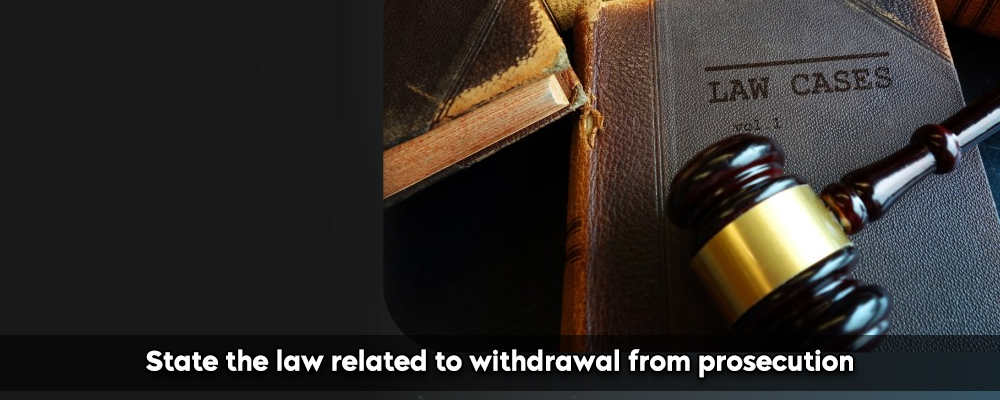Once cognizance has been taken, the matter usually moves forward and, following a full trial, either end in conviction or acquittal. Before that, in certain situations, the accused may be released under Section 256 of the Code of Criminal Procedure in a summons case.
The Code of Criminal Procedure specifies various trial procedures based on the seriousness of the offenses alleged against the accused. There are four different trial procedural types available under the criminal procedure code. They include summary trials, warrant cases tried by magistrates, summons cases tried by magistrates, and trials before a court of sessions. The remaining two are tried in a summons cases trial, while the trial before the court of sessions and warrant cases by magistrates are both tried under the warrant cases method.
Need A Legal Advice
The internet is not a lawyer and neither are you. Talk to a real lawyer about your legal issue

Suspected people were released from custody in warrant proceedings based on police reports
According to the standard legal process, the police file the final charge sheet under Section 173 of the code after concluding their investigation. The concerned Court will then start the accused’s trial. Nonetheless, Sections 239 and 227 of the Cr. P.C. stipulates that an accused person may be released from custody before the filing of charges against him. However, the Accused may only apply these clauses in warrant situations.
In most legal proceedings, the police file the final charge sheet against the accused following the conclusion of their investigation. Subsequently, the offender is tried while the relevant court frames the charges against him. Nonetheless, the Code of Criminal Procedure provides a procedure that allows the Accused to be released from custody before the filing of accusations against him. The Code of Criminal Procedure’s Section 239 specifies when an accused person may be released from custody.
If the Magistrate determines that the charge against the accused is without merit after carefully reviewing the police reports, all of the documents submitted under Section 173, the accused’s examinations, if any, and hearing from both the prosecution and the accused, he will release the accused and document his reasoning.
The materials entered on record by the prosecution against the accused must be believed to be true at that point since the magistrate cannot consider the materially valuable evidence at that stage of the proceedings. A growing body of judicial opinion holds that the Court is not in a position to investigate the material further at this time.
Crucial Components for Discharge
The Court must consider the following crucial components when it reviews the Charge Sheet and the Police Report that the Police have presented to it by Section 173:
- If the Magistrate thinks it appropriate, he may question the Accused.
- Following that, the versions and arguments made by the accused parties and the prosecution will be heard.
- Baseless grounds for the accused: The accused should not be facing any evidence at all. Additionally, the Court must ensure that there is not a prima facie case against the defendant.
When the Sessions trial’s defendants will be released
Section 227 of the Code specifies when an accused person in a Sessions trial will be released from custody. If the judge determines that there is insufficient evidence to pursue charges against the accused, he or she will release the accused and document the reasons for their release after hearing the prosecution and accused’s arguments and reviewing the case file and supporting documentation. An accused person’s discharge cannot be imposed until the charges in the charge sheet and pertinent case law have been taken into account.
The Lawful Maximum The fundamental idea behind the procedural and evidentiary guidelines and precedents that direct and inspire our courts is “Let a hundred guilty be acquitted, but one innocent should not be convicted.” Any time a law about evidence and procedure needs to be interpreted, it is typically interpreted in favor of the accused, maintaining the presumption of innocence.
This is because, in the absence of an innocent man being found guilty of a crime he did not commit, the public would lose faith in and respect for the legal system. The court must release an accused person when charges are brought against them in a warrant case but there is insufficient evidence to convict them.
Lead India provides a variety of legal services, including free legal advice and online information. Here, you can ask a legal question and talk to a lawyer.





 Talk to a Lawyer
Talk to a Lawyer